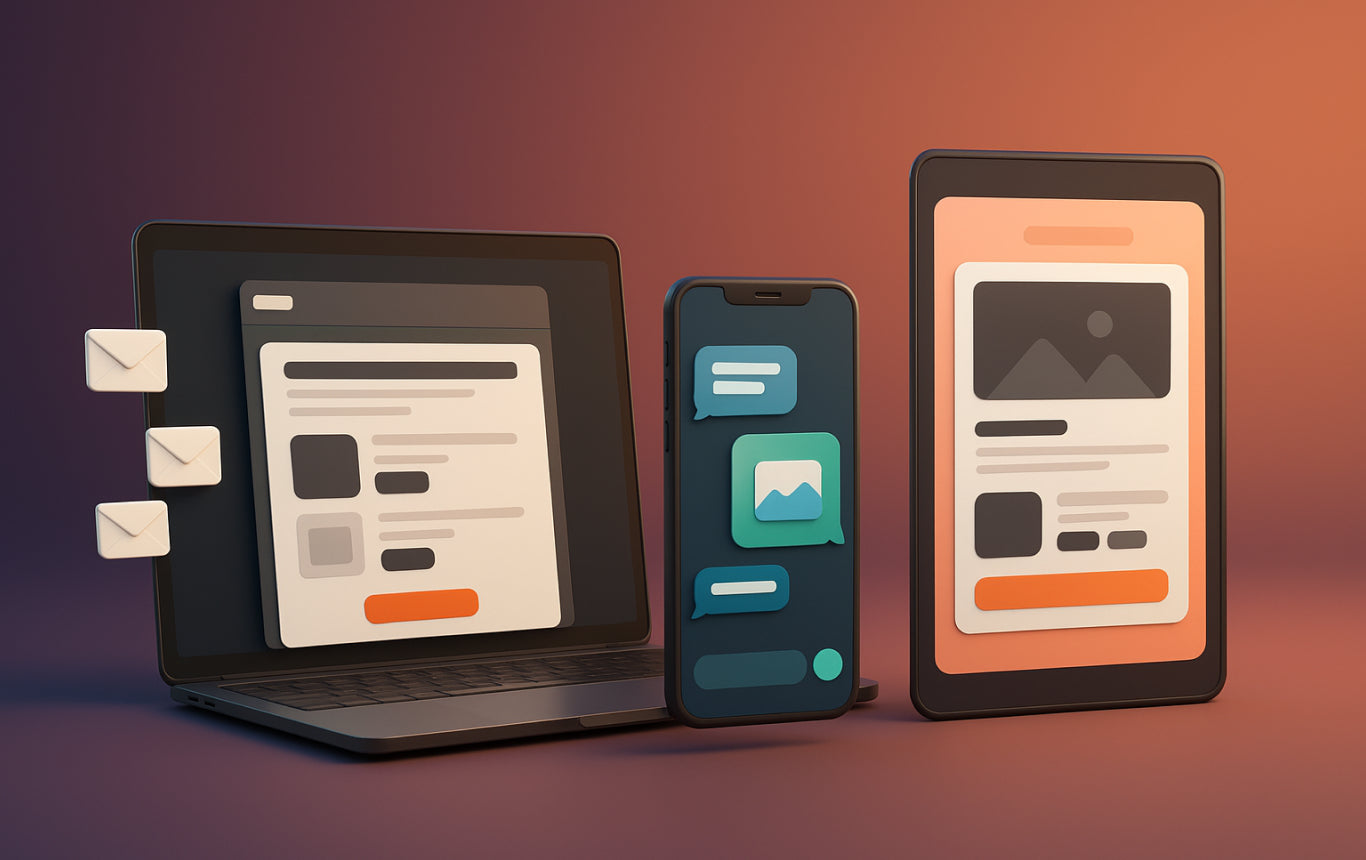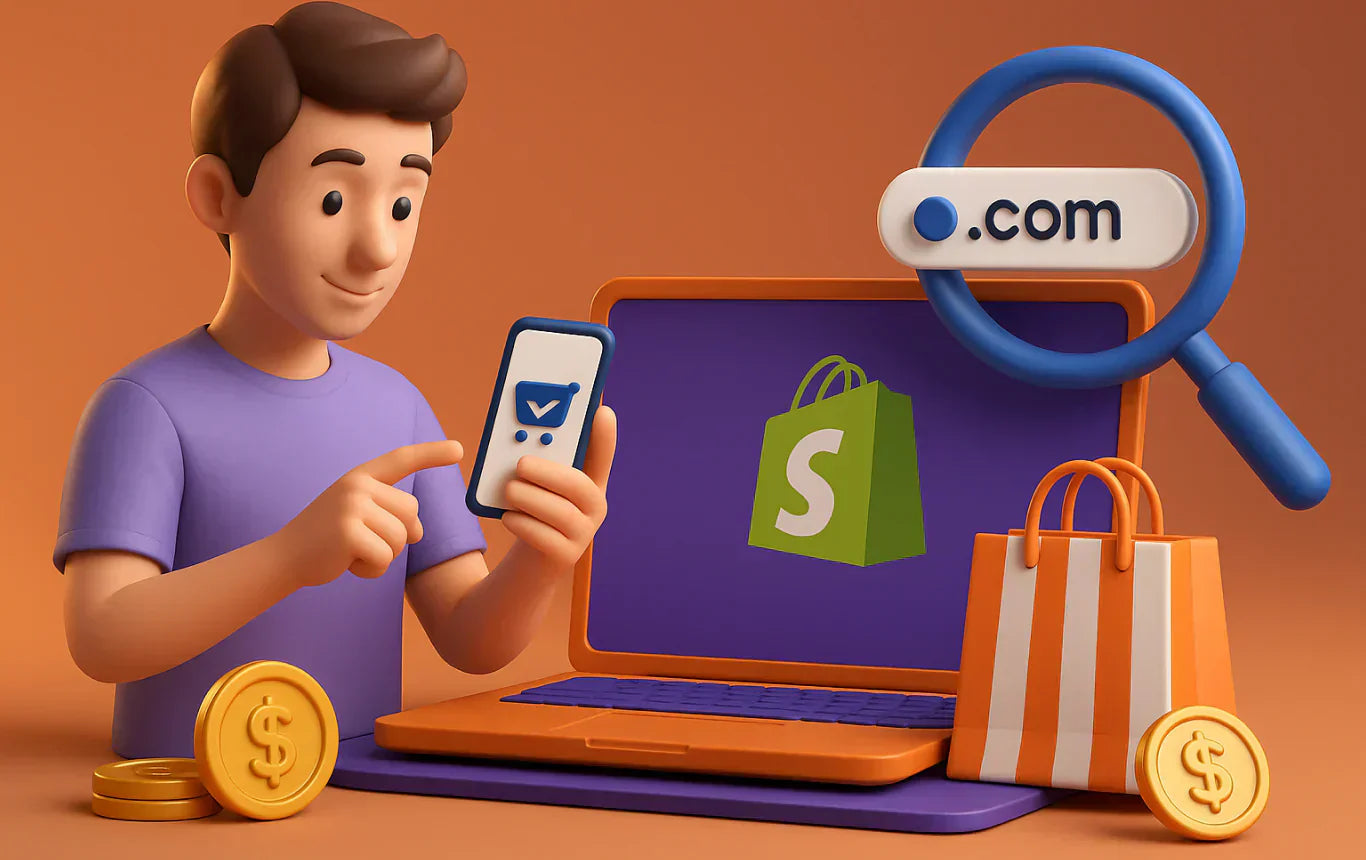What Is the Shopify Marketing Ecosystem and How Can It Boost Your Store in 2026?
Table of Content
Understanding the Shopify Marketing Ecosystem in 2026
Key Components of the Shopify Marketing Ecosystem
Building a Year-Round Growth Framework for Shopify Merchants
Free and Paid Marketing Strategies for Shopify Stores
Templates Merchants Can Use Right Now
Why Work with a Shopify Marketing Agency in 2026
The Future of Shopify Marketing in 2026
Smarter Growth Starts with Smarter Systems
Running a Shopify store in 2026 is no longer about juggling dozens of apps and hoping for the best. Growth now comes from connection, not chaos. The Shopify marketing ecosystem allows merchants to integrate email, SMS, ads, SEO and automation into a single, cohesive system that works year-round.
Imagine this: a customer browses a product on your store. Later, they receive a personalized email suggesting similar items, a timely SMS reminding them of the product they liked and even see a retargeting ad on social media. This isn’t magic, it’s the connected Shopify ecosystem in action. When your marketing channels communicate seamlessly, your store converts more visitors and builds long-term relationships with customers.
In this blog, we’ll explore what the Shopify marketing ecosystem really is, why it matters in 2026 and how merchants can leverage it for consistent growth throughout the year. We’ll include actionable strategies, templates and examples you can start using immediately.
Understanding the Shopify Marketing Ecosystem in 2026
The Shopify marketing ecosystem is essentially a network of integrated tools designed to help you grow your store efficiently. It goes beyond just sending emails or running ads, it ensures that every touchpoint in your marketing strategy is connected and data-driven.
Why does this matter? Because disconnected tools lead to wasted time and money. When each channel shares the same customer data; purchase history, browsing behavior, engagement patterns, your marketing becomes smarter, not harder.
For example, a merchant selling wellness products can use Shopify Email to deliver personalized product recommendations, Shopify SMS to alert customers about restocks and Shopify Ads to retarget visitors, all while tracking results in a single dashboard. This integrated approach boosts conversions and helps build loyal, repeat customers.
Key Components of the Shopify Marketing Ecosystem

The strength of Shopify’s ecosystem lies in its ability to connect marketing channels into one unified workflow. Let’s look at the most essential components and how they contribute to growth:
1. Shopify Email Marketing
Email remains the most reliable channel for driving revenue. In 2026, Shopify Email allows merchants to:
- Automate welcome sequences, abandoned cart emails and post-purchase follow-ups
- Segment audiences based on behavior or purchase patterns
- Use templates for product launches, promotions, or seasonal campaigns
For instance, a store could send a subject line like, “Your next favorite product awaits”, followed by curated product recommendations. Personalized messaging increases the likelihood of clicks and conversions, making your email marketing far more effective than generic campaigns.
2. Shopify SMS Marketing
SMS is fast, personal and highly engaging. By integrating SMS into your Shopify marketing strategy, you can:
- Notify customers about restocks or new product launches
- Remind shoppers about items left in their cart
- Offer time-sensitive promotions
Here’s an example:
SMS complements email campaigns and ensures that your messages reach your customers wherever they are.
3. Shopify Advertising & PPC
Paid advertising remains crucial, but Shopify now allows you to manage it within the ecosystem, ensuring alignment with other marketing channels.
With Shopify Advertising, you can:
- Run targeted campaigns on Google, Meta and Pinterest
- Retarget visitors based on store activity
- Use Shopify Audiences to identify high-value potential buyers
Pairing paid ads with email and SMS campaigns ensures that your marketing messages are consistent, which increases trust and improves conversions.
4. SEO & Content Marketing
Even in 2026, organic search drives high-intent traffic. Effective SEO and content marketing can:
- Improve product page visibility on Google
- Establish authority through blogs, tutorials and guides
- Support your paid campaigns by providing free traffic
For example, publishing a blog like “Best Small Business Marketing Strategies for 2026” can attract new visitors organically while also giving you content to promote through email and ads.
5. Promotions & Automation
Automation makes the ecosystem truly powerful. You can set triggers that send emails, SMS messages, or even ads based on specific customer behaviors.
Example workflow:
- Customer purchases a product
- Send a thank-you email two days later
- Offer a related product via SMS three days later
- Retarget with ads for similar products
This level of automation ensures that no opportunity is missed and allows merchants to scale their marketing efforts without extra manual work.
Building a Year-Round Growth Framework for Shopify Merchants

Running campaigns randomly doesn’t create growth, a structured framework does. In 2026, the most successful Shopify merchants focus on connected, consistent marketing all year long.
Here’s how you can build a system that works across email, SMS, ads and SEO:
Step 1: Segment Your Audience
Segmenting your customers ensures every message hits the right person at the right time. Consider grouping your audience into:
- New customers: Those who’ve recently discovered your store
- Repeat buyers: Loyal customers who respond well to personalized offers
- High-value customers: People who purchase premium products
- Browsing-only visitors: Shoppers who haven’t made a purchase yet
Example: You can send high-ticket promotions only to your premium customers, while offering first-time buyer discounts to new visitors. This avoids wasting marketing dollars and improves conversion rates.
Step 2: Multi-Channel Campaigns
The Shopify ecosystem’s strength lies in connecting channels. Combine email, SMS and paid advertising to create a cohesive message:
- Email: Share product recommendations, launches and updates
- SMS: Send restock alerts, reminders, or time-sensitive promotions
- Ads: Retarget visitors or promote new products to lookalike audiences
When channels work together, customers see consistent messaging wherever they interact with your brand.
Step 3: Automate & Optimize
Automation isn’t just about convenience, it’s about making your marketing predictable and scalable.
Example workflow:
Trigger: Customer abandons cart
Step 1: Send SMS reminder after 2 hours
Step 2: Send follow-up email after 24 hours
Step 3: Retarget with Facebook/Instagram ads after 48 hours
This ensures multiple touchpoints without manual effort, improving conversion rates while saving you time.
Free and Paid Marketing Strategies for Shopify Stores
Not every merchant has a big marketing budget. The Shopify ecosystem allows you to combine free and paid strategies to maximize growth.
Free Marketing Strategies
- SEO Optimization: Optimize product pages for search terms like “best small business gift ideas” or “luxury gift guide”
- Social Media Content: Share behind-the-scenes stories, tutorials, or UGC (user-generated content)
- Content Marketing: Publish blogs, guides, and how-tos that attract organic traffic
Paid Marketing Strategies
- Retargeting Ads: Shopify Audiences makes retargeting visitors simple and effective
- Google Ads: Use Performance Max campaigns to reach high-intent shoppers
- Meta Ads: Retarget people who visited your shopify store but didn’t purchase
Pro Tip:
Templates Merchants Can Use Right Now

To help Shopify merchants implement these strategies in 2026, here are ready-to-use templates for email, SMS and ad campaigns.
Email Template
Subject: “Products Picked Just for You!”
Body:
“Discover products curated based on your past purchases. Don’t miss out, check them out here → [link]”
SMS Template
Ad Copy Template
Headline: “Top Products You’ll Love in 2026”
Text: “Explore trending items and exclusive deals. Shop now to grab your favorites before they’re gone!”
Why Work with a Shopify Marketing Agency in 2026
Even with the best tools, many merchants struggle to connect their marketing ecosystem effectively. That’s where a Shopify expert agency like SANOMADS can make a difference.
We help brands:
- Connect email, SMS, ads, SEO and automation for maximum efficiency
- Optimize campaigns based on data, improving ROI
- Save time with automated workflows
- Increase retention by delivering personalized experiences
Example:
A lifestyle brand partnered with SANOMADS in early 2026. By integrating email, SMS and ads into a connected system, they increased revenue by 148% within 90 days while reducing ad spend.
The Future of Shopify Marketing in 2026

Shopify is evolving to make marketing smarter, more predictive and fully connected:
- AI-powered segmentation: Automatically target customers based on behavior and purchase history
- Predictive campaigns: Marketing that adapts to trends and customer activity
- Connected analytics: Understand which channels truly drive revenue and optimize accordingly
- Smart recommendations: Automatically suggest upsells and cross-sells tailored to each customer
Merchants who embrace these tools and connect their channels will dominate in 2026. It’s not about spending more, it’s about making every action count.
Smarter Growth Starts with Smarter Systems
The Shopify marketing ecosystem in 2026 gives every merchant, from startups to global brands, the ability to grow consistently and efficiently all year. By connecting email, SMS, ads, SEO and automation, you can turn your store into a self-sustaining growth engine.
Tools alone don’t create results, strategy does. That’s why working with a partner like SANOMADS ensures your marketing ecosystem isn’t just running, it’s thriving.
Start 2026 with a connected strategy, automate smartly and watch your Shopify store scale smarter than ever.
Partner with SANOMADS to unlock your Shopify store’s full potential in 2026.








